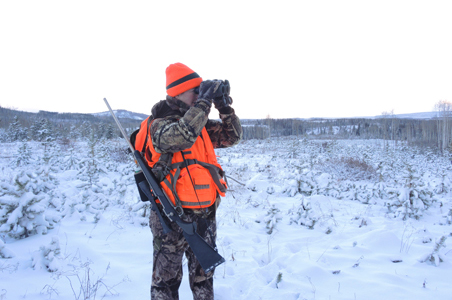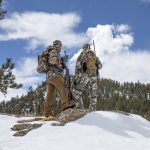Hypothermia is a serious condition, and it doesn’t just happen in frigid temperatures.
The first of several important misconceptions about hypothermia is that it means “freezing to death.” That’s not accurate. Hypothermia is the loss of core body heat to a level that impairs normal muscular and mental functioning, endangering life. If not treated and reversed, hypothermia can worsen until the victim, no longer able to generate internal warmth, becomes semiconscious or unconscious, is extremely vulnerable to cardiac fibrillation, and eventually dies from heart stoppage.
You can begin having the signs and symptoms of mild hypothermia with a core-temperature drop of only a couple of degrees–and it doesn’t take much to fall to that mark in conducive circumstances. This leads to another common misunderstanding: that hypothermia is mainly an extreme-cold, frigid-weather issue. Of course heat loss is a danger in the deep cold, but it can be as much or more of a problem in less obvious conditions. When various factors combine–such as moisture, comparatively cool temperatures and/or wind–a person can become hypothermic virtually any month of the year, and in a surprising array of locations. For instance, in a recent study of 428 cases of accidental hypothermia, 69 of them occurred in Florida, not a place most people associate with cold.
It’s also important to understand that hypothermia is not just about getting too cold at the core and dying from the lack of necessary heat. That can happen;, but the more frequent way people die from hypothermia is by perishing from its side effects or symptoms. Even when one is mildly hypothermic, coordination and cognition are impaired. Clumsiness, stumbling, falling, thinking unclearly, making poor decisions–these are all by-products of core heat loss. Many deaths seemingly caused by “accidents” and bad choices are actually a result of the victim’s addled, hypothermic state.
Dangerous heat loss occurs in stages, with varying signs and symptoms. Mild hypothermia begins with a small drop in core temperature, usually signaled by the sensation of feeling cold and shivering, which is the body’s way of generating internal heat. At about 96 or 95 degrees F, shivering becomes more constant and involuntary. The person might have goose bumps, numb hands, and be unable to perform complex or fine-skill manual tasks.
The transition or drop to moderate hypothermia usually occurs as core temperature lowers to about 90 degrees F. At this stage shivering is intense, coordination is obviously impaired, the person may stumble, act confused, move in a slow, labored way, have difficulty speaking and show signs of amnesia, apathy, or withdrawal. At approximately 88 degrees shivering stops, so internal heat can no longer be generated. Muscle coordination is poor, the person may no longer be able to walk and will be confused, possibly incoherent and irrational. Victims at this stage are past being able to save themselves or act appropriately on their own behalf, and will most likely die if not rescued and treated to reverse their condition.
Severe-stage hypothermia starts when core temperature lowers to about 82 degrees F, involving much-decreased heart and respiratory rates, muscle rigidity, loss of awareness, and semiconsciousness or unconsciousness. The heart becomes dangerously “irritable” (easily stimulated into ventricular fibrillation). From here through profound-stage hypothermia, the details are medically technical and all bad news. If untreated the result is cardiac failure and death.
One of the best ways to avoid these grim states is to detect the signs and symptoms of core heat loss as early as possible. First responders and rescue workers are taught to watch for the “umbles:” stumbles, mumbles, fumbles, and grumbles that indicate a decrease in motor coordination, cognition, and consciousness. At an early enough stage, you can even detect these in yourself, especially if you also feel very cold and are shivering. In what might be called “hypothermic conditions” it’s always a good idea for partners or groups to agree to periodically monitor each other for umbles, shivering, and other clues that hypothermia may be occurring. If a person can’t easily count backward from fifty and/or walk a straight heel-to-toe line for thirty feet, it’s time to suspect the onset of dangerous heat loss.
What are “hypothermic conditions”? As noted, extreme cold and moderately frigid air temperatures are pretty obvious environments, but hypothermia can occur whenever the body is losing more heat than it can replace. This usually involves one or more of the following elements: moisture, moderately cool to cold air temperatures, and wind–coupled with clothing inadequate for the conditions. If it’s 50 degrees and you get soaked in a rain and the wind is blowing, and all you have is a light, sodden jacket for insulation, you’re in hypothermia territory. A hunter damp from rain, snow, or sweat who becomes stranded overnight in moderately chilly temperatures is at a high risk for hypothermia, if unable to stop continual heat loss.
Briefly, there are four main ways we lose heat: radiation, conduction, convection, and evaporation. Radiation is direct heat loss from a warm body to a cooler environment. In cold weather you can radiate a lot of heat from your exposed head and neck. A warm hat that covers your ears and a neck gaiter or scarf can mean the difference between heat maintenance and hypothermia. Conduction is heat loss through direct contact with a colder surface. Avoiding such contact when possible or placing insulation between yourself and colder surfaces are the obvious solutions. Water conducts heat away from the body 25 times faster than air. Thus the great danger of getting wet in a cool to cold environment, and justification for the survival slogan: “Stay dry to stay alive.” Convection is heat loss caused by air moving around you. This can be a breeze or wind, amounting to the well-known wind-chill factor; or it can be a “wind” effect created by your movement, as in a boat or other vehicle. The antidote for convective heat loss is shelter found or made, including the “personal shelter” of appropriate outer shell clothing. Carrying two or more heavy-duty, yard-size garbage bags in your survival kit can also be lifesaving in this regard. Even if your clothing is wet and cannot be dried, encasing yourself in the plastic bags (using them as a “vapor barrier,” one for the lower body, one with eye and mouth holes for over your head and upper body) will help you dry out while keeping convective and conductive heat loss to a minimum. Evaporation of sweat or water on your skin has a cooling effect and pulls heat from your core. This is another reason to stay dry, not only from external causes, but also from sweat buildup. In very cold air another seldom-recognized cause of evaporative heat loss occurs during basic respiration, especially when heightened by strenuous physical effort. A simple way to reduce this type of lost heat is to breathe through a face mask or scarf.
Obviously, having proper clothing for the conditions is a basic way to prevent hypothermia. For example, a good rainsuit or outer shell, moisture-resistant pants (no denims), adequate gloves and footwear, a middle layer of fleece, a warm shirt, and wick-dry polypro undergarments. If hypothermia conditions exist or could occur, it’s wise to carry extra undergarments and socks, so that you can replace wet clothing with dry if necessary.
Other advance prep should include fire-making gear, two or three commercial hand warmers, the aforementioned garbage bags, a balaclava or face mask in very cold conditions, and a few energy bars, high in sugar, for quick-burst metabolic fuel that will help heat your core more quickly and effectively if you do begin to get shiveringly cold.
How do you proceed if you or a partner appears hypothermic?
Treatments and responses vary depending on the stage of the problem. Contrary to popular belief, for mild to early-moderate hypothermia, one should not attempt to rewarm the victim with external heat application (in the form of chemical heat packs, hot water bottles, heated rocks, another person’s warm body, etc.). Here’s why: your sense of being cold or warm is more a result of skin temperature than core temperature. Cold skin cues the brain to signal a shiver response, generating inner heat. If you warm a shivering hypothermic person’s skin, the person will stop shivering (and stop generating necessary heat at the core), while actually losing additional heat because of dilated blood vessels near the heated skin. So the attempt at external rewarming actually leads to becoming more hypothermic, not less. The general field rule is: no direct external warming unless the person has stopped shivering (can no longer shiver) in an advanced-moderate to severe stage of hypothermia.
To treat mild to moderate hypothermia, first reduce heat loss. This can mean adding layers of clothing, changing wet clothing for dry, bundling the victim in an insulating wrap, finding or making shelter and warming the immediate area with a fire. Next, add fluids and fuel. Warm to hot (not scalding) liquids help reheat the inner core, and also add fuel calories if the liquid contains sugar or other nutrients. No alcohol, however, since it’s a vasodilator that will only increase heat loss. Also avoid caffeine, a diuretic that furthers dehydration, which worsens hypothermia. Eating a candy or energy bar, spoonfuls of peanut butter, gorp–whatever you have for survival food–will provide calories for rewarming. If water can be boiled by fire or stove, breathing in warm steam can bring additional heat to the core.
For more advanced, severe and profound hypothermia, the situation is much more serious and delicate. Insulate as well and fully as possible in clothing and wraps, making sure the person is dry. Don’t try to give fluids or food to anyone who is badly altered mentally, or who is semiconscious or unconscious. For those who have stopped shivering, external heat can be applied, especially to the major arteries. Chemical heat packs, hot water bottles, or hot towels can be placed at the neck for the carotid, in the armpits for the brachial and in the groin for the femoral arteries. Handle the victim carefully, since rough handling can trigger heart disfunction and failure. Evacuation and hospital rewarming are vital at this stage. Because the “irritable” heart is so easily disturbed, do not attempt CPR on a hypothermic person who appears dead unless you are certain there is no pulse or respiration. These may be hard to detect because of the severely reduced heart and breathing rates. Again, evacuation is usually the best remaining option. As wilderness medical expert, Dr. Eric Weiss advises: “Never assume a profoundly hypothermic victim is dead until the body has been warmed and there are still no signs of life. Rarely, a victim who is without detectable signs of life, and presumed to be dead, will recover when rewarmed.”










